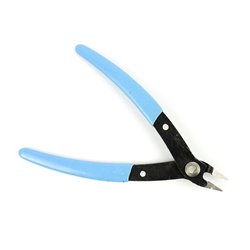Maintaining a spotless layout can be a constant battle against the elements. Whether it's dust, dirt, or that pesky...
No products
Product successfully added to your shopping cart
There are 0 items in your cart. There is 1 item in your cart.
Search Tips
What is a sprue on a scale model kit?
You'll quickly become familiar with the sprue, an essential element in any model kit. This plastic frame, or runner, holds all the individual components you need to construct your model. Each part is attached to the sprue by small plastic channels, ensuring they stay in place during packaging and transport. When you open your model kit, the sprue is likely the first thing you'll notice, with all the pieces neatly organised.
The sprue serves several crucial functions in your modelling process. It plays a key role in manufacturing, allowing multiple parts to be moulded simultaneously, which helps ensure each piece is formed correctly and reduces the likelihood of defects. Additionally, the sprue simplifies packaging, as it holds the parts together in a compact form, making it easier to pack and ship the model kits without losing any small components.
As you start assembling your model, you'll find the sprue acts as an excellent organisational tool. Each part is usually numbered or labelled on the sprue, corresponding to the instructions provided in your kit. This makes it easier for you to identify and locate the parts you need, reducing confusion and speeding up the building process. Carefully cutting the parts from the sprue using a pair of clippers or a hobby knife is an important step to ensure the parts are clean and ready for assembly.
Removing parts from the sprue requires precision and care on your part. You'll need to cut close to the part without damaging it, often using specialised tools designed for this purpose. Any remaining nubs or excess plastic from the sprue should be filed or sanded down to achieve a smooth finish. This meticulous preparation is crucial for the parts to fit together correctly, ensuring your final model looks professional and realistic.
In summary, the sprue is a vital component in your scale modelling journey, playing a key role in the production, packaging, and assembly of model kits. It keeps all the parts organised and protected, facilitates the manufacturing process, and assists you in building your kit efficiently. Understanding how to work with sprues and properly prepare the parts is an essential skill, contributing to the overall success and enjoyment of your hobby.
Click here to receive the tips weekly in your mailbox. You can unsubscribe at any time.









